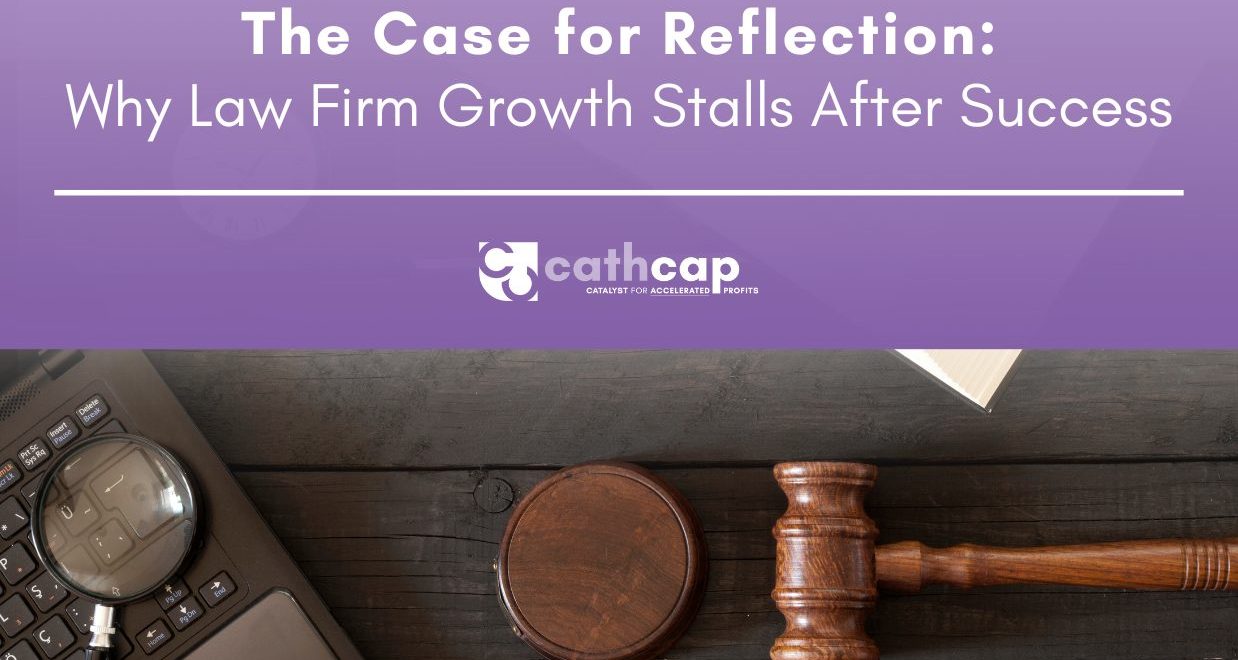The Plateau Problem: When Momentum Masks Stagnation
Every successful law firm reaches a moment where the graph flattens.
Revenue steadies between $5M and $10M, partners are busier than ever, and on paper, everything looks great.
Yet underneath the surface, something shifts. Growth slows. Margins tighten. The firm is running harder—but not necessarily running better.
We call this the plateau problem—the hidden phase where momentum gets mistaken for progress.
It’s the point where operational noise drowns out strategic clarity, and the same instincts that once fueled growth now quietly hold it back.
“When you’ve built a great firm, the next ceiling isn’t financial—it’s strategic.”
At this level, the firm isn’t failing—it’s coasting. And coasting can feel deceptively safe.
When we meet firms at this stage, the managing partner rarely asks, “What’s wrong?” Instead, they ask, “Why doesn’t this feel as good as it should?”
That question is the first sign it’s time to pause—not to slow down, but to reflect.
What Reflection Reveals
Law firms excel at looking outward—at clients, cases, and outcomes.
Reflection turns that focus inward, and the findings are almost always surprising.
When a CFO facilitates that reflection, patterns emerge:
Not all cases create equal profit. Some of the firm’s proudest wins—high-profile, emotionally charged matters—actually drain capacity and obscure more lucrative work.
Utilization numbers lie. A 90% utilization rate may look efficient but often hides burnout, overstaffing in the wrong areas, and underleveraged talent elsewhere.
Cash flow doesn’t follow effort. The busiest teams aren’t always the most profitable—and “busy” rarely means “efficient.”
Reflection reveals where the firm’s energy is going—and whether that energy is fueling growth or friction.
“The numbers tell you what happened. Reflection tells you why.”
At this stage, the goal isn’t to celebrate what worked in the past. It’s to question which parts of success are still serving the next phase.
The 3-Question Framework
Before adding new marketing channels, expanding practice areas, or hiring another attorney, sit with these three deceptively simple questions:
1. Which clients bring the most predictable revenue?
Consistency builds confidence. Identify the clients who not only pay reliably but also align with your firm’s rhythm and values. That’s where sustainable growth lives.
2. Which practice areas drain capacity with low ROI?
Every firm has “legacy” work—cases you take because you always have. Reflection separates what’s profitable from what’s habitual, allowing leadership to redirect resources toward higher-value work.
3. What decisions would I repeat (or never repeat) if starting again?
This one stings—but it’s where transformation starts. When you name the decisions you’d make again, you define your strengths. When you name the ones you wouldn’t, you uncover your next playbook for change.
“Clarity doesn’t come from doing more—it comes from asking better questions.”
These questions are financial, not philosophical.
They point directly to pricing, staffing, marketing investment, and partner compensation strategy.
Use them quarterly—not annually—to steer ahead of stagnation.
From “More Cases” to “Better Cases”
Growth at scale isn’t about quantity—it’s about quality of return.
Reflection shifts the focus from:
“How many cases did we open?” → to “How many of those cases truly drive margin?”
“How many people did we hire?” → to “How well are we using the talent we have?”
“How fast are we growing?” → to “How strong is the foundation supporting that growth?”
Firms that embrace this shift rediscover why they built the practice in the first place.
Profitability rises. The team re-engages. Leadership regains clarity.
“Reflection isn’t a slowdown—it’s a recalibration.”
The CFO’s Lens: Turning Reflection Into a System
At Cathcap, we treat reflection as a financial operating system—a repeatable rhythm that transforms insight into action.
That means:
Reviewing case mix and profitability by attorney, not just by department
Connecting utilization data to actual cost structures
Building forecasts around predictable profit, not just projected revenue
When law firm leaders treat reflection as part of their financial cadence, it stops being reactive.
It becomes how the firm stays relevant—and grows smarter with scale.
Takeaway: The Power of a Strategic Pause
Success often hides inefficiency. Reflection exposes it—and turns it into opportunity.
If your firm feels “stuck at good,” it may not need another marketing campaign or lateral hire.
It may need a mirror.
Ask. Assess. Adjust.
Then get back to growth—with focus this time.
Enjoyed this read? Stay in the loop with our latest insights and updates –
subscribe to our newsletter now!






Recent Comments